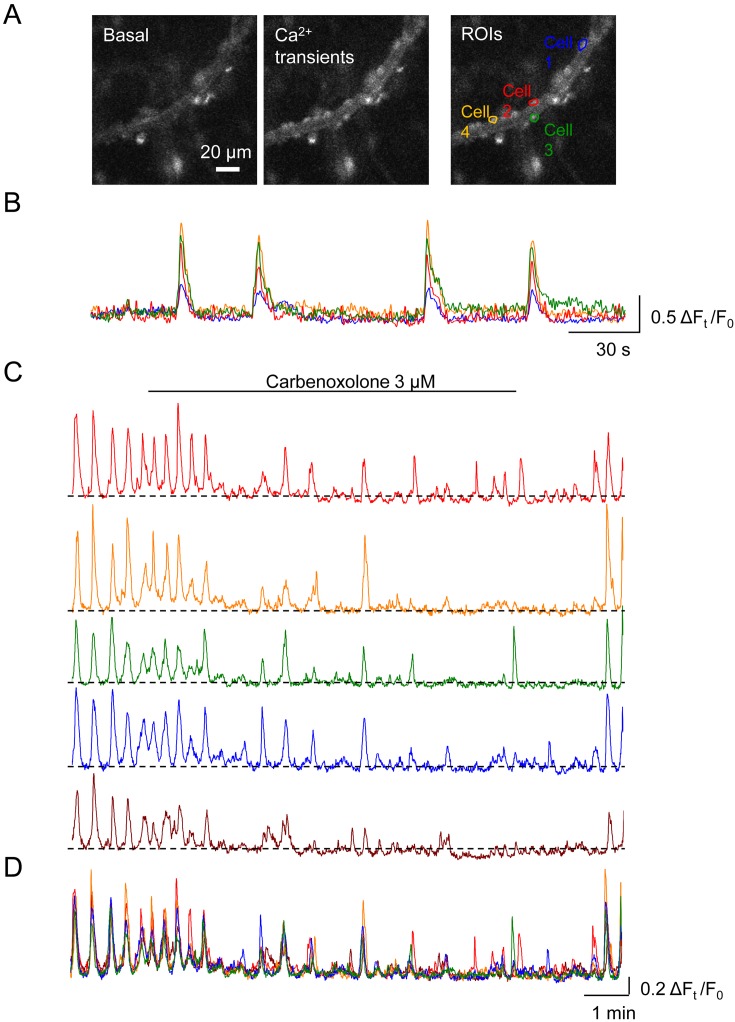Fig. 4.
Roles of gap junction in maintaining the synchrony of spontaneous Ca2+ transients.
In a submucosal precapillary arteriole (PCA) of rat rectum loaded with Cal-520, mural cells with a round shaped cell body exhibit spontaneous Ca2+ transients (A). Four mural cells are randomly selected as regions of interests (ROIs). Corresponding traces demonstrate the synchrony of spontaneous Ca2+ transients in the four cells (B). In a postcapillary venule (PCV) of rat gastric submucosa loaded with Cal-520, spontaneous Ca2+ transients in five mural cells are synchronous (C). Carbenoxolone (3 μM), a gap junction blocker, disrupts the synchrony of spontaneous Ca2+ transients amongst the five cells with a reduction in their amplitude. The gradual disruption of the synchrony is evident in the merged traces corresponding to C (D). Images and/or traces are reproduced from (17) (A, B) and (16) (C, D) with permission.

